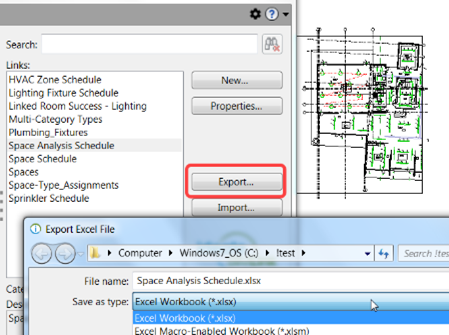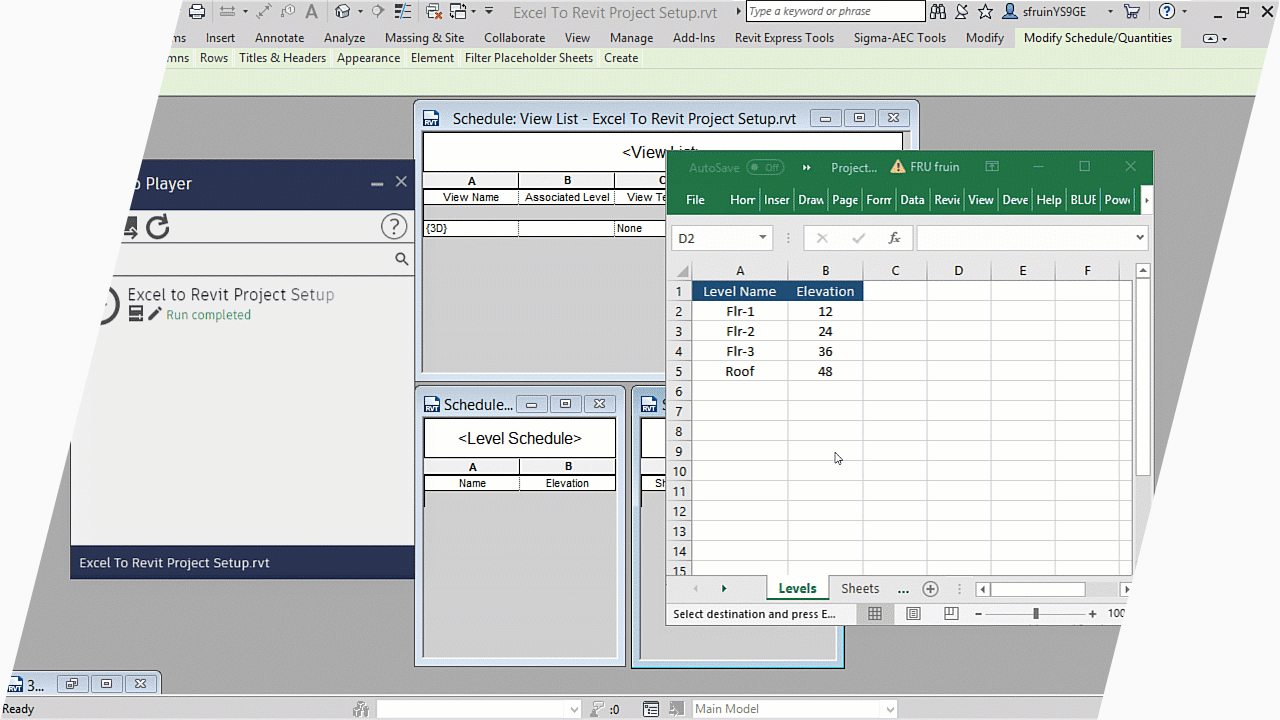Flawlessly Import Excel into Revit: Boost Your Performance
Wiki Article
Grasping the Art of Information Integration: How to Seamlessly Import Excel Files Into Revit
Are you battling to import Excel files into Revit efficiently? Look no further! In this write-up, we will guide you with the process of mastering the art of data combination. Discover the relevance of smooth integration in Revit and discover the Excel file style for Revit combination. Get prepared to prepare your Excel information easily and follow our detailed guide to import data right into Revit. With our ideal practices, you'll accomplish information integration success quickly. Allow's get going!Comprehending the Value of Information Combination in Revit
Comprehending the relevance of information assimilation in Revit is crucial for seamless importing of Excel files. When you integrate data from Excel right into Revit, it permits you to successfully upgrade and handle info throughout the entire project. This assimilation makes sure that your style and building process is updated and accurate.By integrating information, you can conveniently import and update parameters, timetables, and also geometry in Revit. This gets rid of the need for hand-operated information entry, saving you time and lowering the threat of errors. With Revit's data assimilation abilities, you can maintain uniformity and accuracy in your project, while additionally enhancing cooperation amongst staff member.

Checking Out the Excel File Style for Revit Integration

In order to successfully incorporate Excel data into Revit, it is essential to guarantee that the information is formatted appropriately. This includes properly classifying rows and columns, as well as structuring the information in a means that is compatible with Revit's data schema. Revit makes use of particular parameters and groups to organize information, so it is essential to align the Excel information with these specifications to ensure a smooth integration.
In addition, it is very important to note that Revit just supports particular data kinds when importing from Excel. These include message, numbers, and dates. Any kind of other information types, such as solutions or conditional formatting, will certainly not be recognized by Revit and might cause concerns during the combination process.
Preparing Your Excel Information for Seamless Import Into Revit
To make sure a smooth assimilation procedure, you'll require to properly format and label the columns and rows in your Excel data before importing it into Revit. Begin by analyzing your Excel information and recognizing which rows and columns have pertinent information for your Revit project.Next, guarantee that the data in each column is correctly formatted. For instance, if you have a column for dimensions, make certain that all dimensions are regularly formatted in the exact same systems of measurement. Revit relies upon constant formatting to accurately interpret and import data.
In addition, it is necessary to look for any kind of vacant cells or incongruities in your information. Revit may not be able to read or import information from cells that are vacant or consist of errors. Therefore, it is recommended to assess your Excel information and tidy up any inconsistencies prior to importing it into Revit.
Step-By-Step Overview to Importing Excel Data Into Revit
Once you have actually correctly formatted and identified your Excel information, you can easily import it right into Revit by following this step-by-step overview. To start, open Revit and browse to the "Insert" tab. revit plugins.Next, a dialog box will certainly show up, enabling you to tailor the import settings. Below, you can choose the worksheet you wish to import, specify the variety of cells to import, and select the suitable devices for your data. As soon as you've made your choices, click "OK" to proceed.
Revit will now present a preview of your Excel data. Take a minute to evaluate the sneak peek and ensure that whatever looks correct. If needed, you can make changes you can look here to the import setups by clicking on the "Setups" switch.
Best Practices for Data Assimilation Success in Revit
Make sure you adhere to these best techniques to make sure effective assimilation of data in Revit. It is crucial to arrange your data in Excel before importing it right into Revit. Be mindful of the systems and data types when mapping the data, as any kind of inconsistencies can lead to mistakes in the integration process.Another important technique is to frequently verify and update your information. As your project progresses, it is necessary to maintain your Excel documents up to day with any type of modifications made in Revit. This will certainly aid preserve the accuracy and consistency of your data throughout both systems. Additionally, utilize information validation devices within Revit to determine any mistakes or variances you could check here in the integrated information.
Finally, it is recommended to establish a clear process for data assimilation. This includes specifying responsibilities and duties, establishing up an interaction network in between team members, and establishing a regular tempo for data updates and testimonials. By complying with these ideal practices, you can make certain a effective and seamless combination of information in Revit, ultimately enhancing the efficiency and accuracy of your job.
Verdict
In final thought, grasping the art of data combination is vital for smooth import of Excel submits into Revit. Comprehending the value of information combination in Revit is the very first step towards successful combination.When importing data from Excel into Revit, it is important to understand the file layout and just how it can influence the assimilation procedure (revit plugins). Revit uses specific criteria and groups to arrange data, so it is important to align the Excel information with these specifications to make sure a check seamless integration
Be conscious of the systems and data kinds when mapping the data, as any disparities can lead to errors in the integration process.
In addition, make usage of data recognition devices within Revit to identify any mistakes or variances in the integrated information.

Report this wiki page